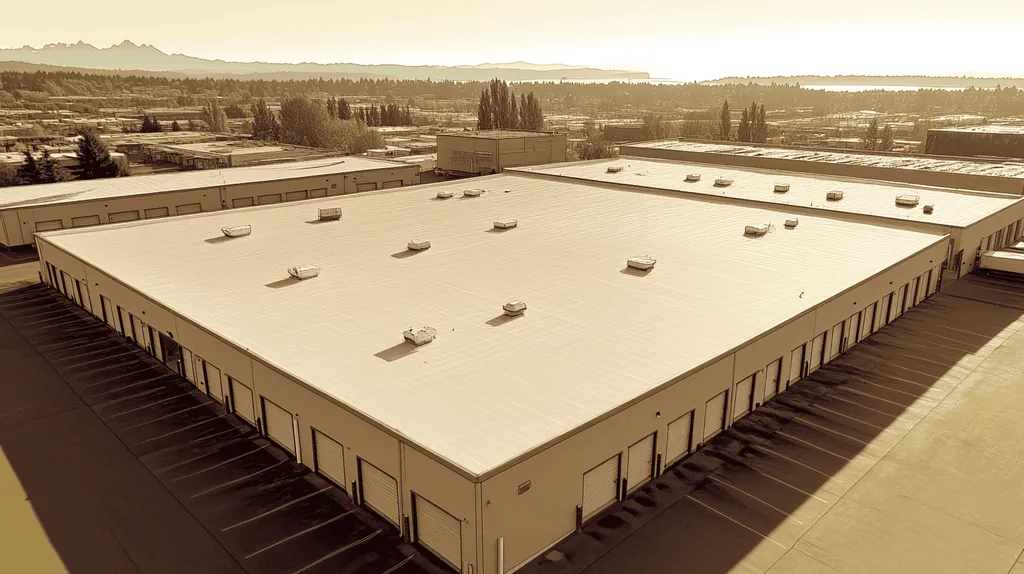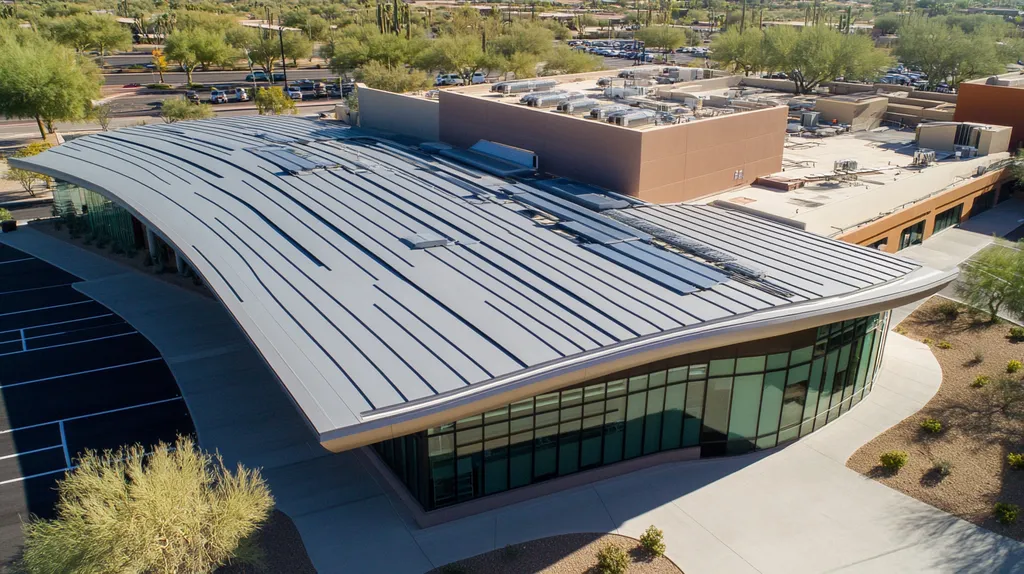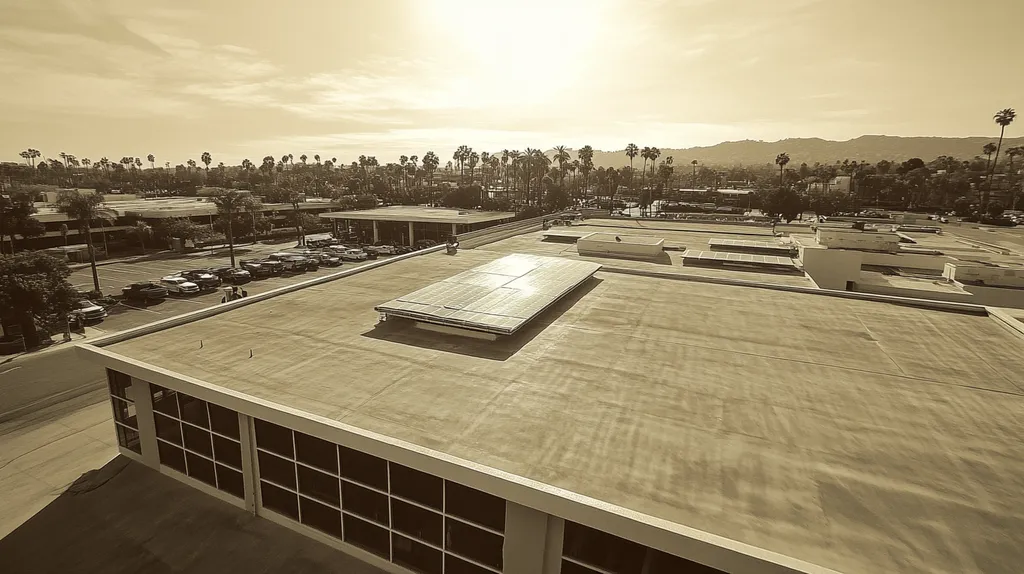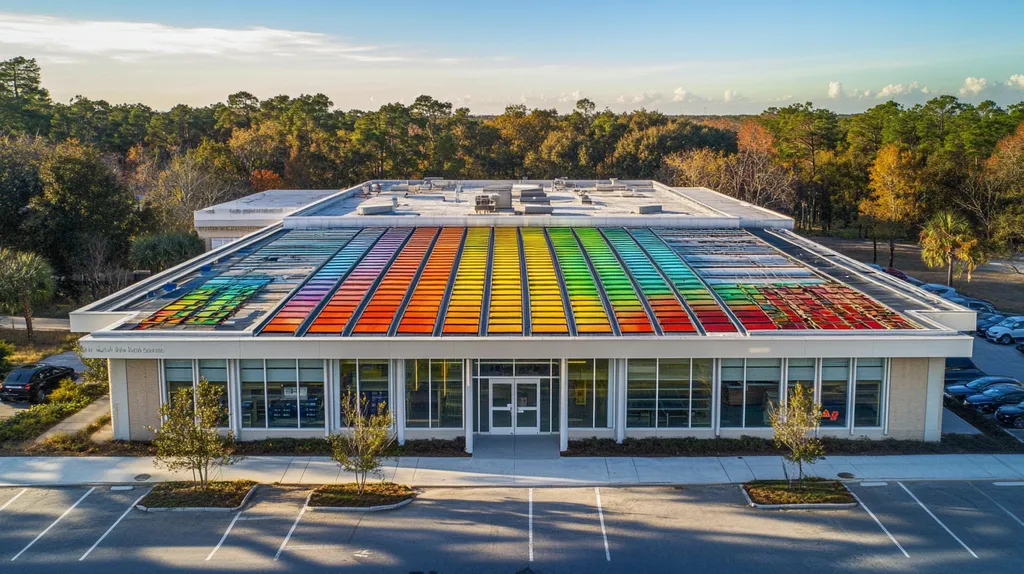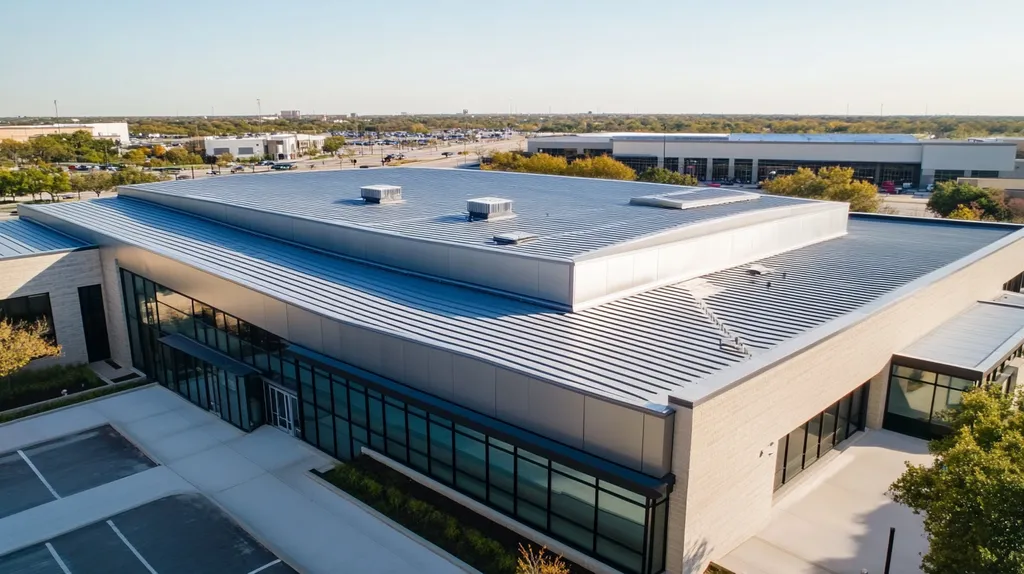Welcome to today’s Battle Royale featuring two roofing heavyweights: “TPO” in the east corner versus “PVC” in the west!
Tonight’s showdown pits these contenders against each other across six punishing rounds designed to test every aspect of their performance for Substrate Choice for Commercial Roof Lifespan.
At stake? Millions in potential costs, decades of building protection, and the critical performance demands of modern commercial and industrial facilities.
Our professional judging panel will evaluate each round on technical merit, real-world performance, and value delivery. After all six rounds, we’ll declare our ultimate champion.
Ladies and gentlemen, facility managers and building owners… it’s time to rumble!
ROUND 1: INITIAL COSTS & INSTALLATION
In today’s volatile construction market, choosing between TPO and PVC roofing systems represents a six-figure decision for commercial property owners. With material costs fluctuating and skilled labor at a premium, the initial investment can impact operational budgets for decades to come.
Understanding the true costs requires examining not just material prices, but also installation complexity and project duration. For facilities spanning 20,000 square feet or more, even small cost differentials can multiply into significant budget variations.
Material Expenses
The raw material cost difference between TPO and PVC significantly impacts initial budgets for commercial roofing projects. TPO membranes typically cost $3-6 per square foot, making them an attractive option for cost-conscious property owners.
PVC membranes command a premium price point of $6-9 per square foot. This higher cost reflects PVC’s enhanced chemical resistance and superior weld strength, features that can prove valuable in industrial environments.
TPO and PVC membranes both demonstrate excellent resistance to UV radiation, ozone, and chemical exposure, making them suitable choices for buildings in harsh environments. (source: Arko Exteriors)
ADVANTAGE: TPO
Installation Complexity
Installation complexity directly affects labor costs and the potential for installation errors. TPO’s lighter weight and greater flexibility make it easier to maneuver and position, reducing crew fatigue and installation time.
PVC installation requires more specialized welding equipment and precise temperature control during seam welding. This increased complexity demands more experienced installers and can lead to higher labor costs.
The technical demands of PVC installation also increase the risk of improper installation if contractors lack specific system experience. This can lead to callbacks and repairs that erode any initial cost savings.
ADVANTAGE: TPO
Project Timeline
Project duration affects both direct costs and business disruption expenses. TPO installations typically progress faster due to simpler welding requirements and easier material handling.
PVC installations often require more time for proper seam welding and detail work. The additional complexity can extend project timelines by 20-30% compared to TPO installations of similar size.
Weather sensitivity during installation also favors TPO, as it can be installed across a broader temperature range with fewer delays. This flexibility helps keep projects on schedule and minimizes business interruption.
ADVANTAGE: TPO
ROUND 1 WINNER: TPO
ROUND 2: DURABILITY & LIFESPAN
When a commercial roof fails prematurely, repair and replacement costs can exceed $1 million for large facilities. With climate change intensifying weather extremes and rising energy costs demanding better thermal performance, the durability difference between TPO and PVC has never been more critical for property owners.
Understanding how these materials perform over decades of service helps facility managers avoid costly mistakes. While both options offer modern solutions, their long-term performance characteristics vary significantly under real-world conditions.
Long-term Performance
TPO roofing systems typically deliver 15-20 years of reliable service when properly installed and maintained. Their molecular structure provides good resistance to UV radiation and common environmental pollutants, though performance can vary between manufacturers.
PVC membranes consistently achieve 20-30 year lifespans, with some installations exceeding three decades of service. Their superior chemical composition resists degradation from industrial emissions, acid rain, and other harsh environmental conditions.
The enhanced durability of PVC translates directly into longer service life and reduced lifetime costs. This substantial difference in longevity makes PVC the clear choice for buildings requiring maximum service life.
ADVANTAGE: PVC
Resistance to Physical Damage
TPO membranes offer moderate resistance to impacts and punctures, with newer formulations showing improved durability. However, they remain vulnerable to damage from sharp debris and heavy foot traffic, often requiring more frequent repairs.
PVC’s enhanced molecular structure and reinforcement layers provide superior puncture resistance and tear strength. This robust construction better withstands maintenance traffic, falling objects, and other physical challenges common to commercial roofs.
The superior physical durability of PVC reduces maintenance requirements and repair frequency throughout the roof’s lifespan. This enhanced resilience proves especially valuable for facilities with rooftop equipment requiring regular service access.
ADVANTAGE: PVC
Weathering and Aging
TPO membranes can experience accelerated aging when exposed to extreme temperature cycles and intense UV radiation. Their surface reflectivity often diminishes over time, reducing energy efficiency benefits and potentially accelerating degradation.
PVC maintains its protective properties and reflective characteristics longer under harsh conditions. The material’s inherent flexibility helps it better accommodate building movement and thermal shock without compromising seam integrity.
This superior weathering resistance helps PVC roofs maintain their protective and energy-saving properties longer. The material’s proven track record of sustained performance through decades of exposure makes it the preferred choice for long-term durability.
ADVANTAGE: PVC
ROUND 2 WINNER: PVC
ROUND 3: PERFORMANCE FACTORS
For commercial property owners, roofing performance factors directly impact both operational costs and asset value. With energy costs rising 15-25% annually in many regions, choosing between TPO and PVC can mean the difference between profitable operations and budget-draining inefficiency.
Modern building systems demand roofing solutions that deliver across multiple performance categories. Understanding how these materials handle weather extremes, maintenance demands, and energy efficiency helps stakeholders make decisions aligned with long-term facility goals.
Weather Resistance
In an era of increasingly extreme weather events, roofing systems must withstand everything from intense UV exposure to destructive storms. TPO membranes feature advanced UV stabilizers and heat-reflective properties that maintain performance even under intense sun exposure.
TPO roofs demonstrate excellent durability across varying thicknesses, with 60-mil and 80-mil options providing enhanced protection against severe weather conditions. Their molecular structure resists degradation while maintaining flexibility across temperature extremes. (source: American Weather Star)
PVC systems excel in chemical resistance and maintain structural integrity during extreme temperature swings. Their enhanced molecular bonds provide superior protection against acid rain and industrial pollutants.
Given their complementary strengths – TPO’s superior UV resistance versus PVC’s chemical resilience – this category results in a TIE.
Maintenance Requirements
Regular maintenance significantly impacts both operational costs and roof longevity. TPO systems typically require only basic periodic inspections and occasional cleaning to maintain peak performance.
Their simplified material composition means repairs can usually be completed quickly with standard tools and techniques. This translates to lower maintenance costs and reduced facility disruption.
PVC systems demand more specialized maintenance procedures and cleaning products. Their complex chemical structure requires careful attention to seam integrity and surface condition.
The straightforward maintenance profile of TPO provides clear cost and convenience benefits, giving it the ADVANTAGE in this category.
Energy Efficiency
Energy efficiency directly affects both environmental impact and operational costs. TPO’s highly reflective surface maintains its solar reflectance index (SRI) better than most alternatives, reducing cooling loads significantly.
The material’s thermal performance remains stable even after years of exposure, helping maintain consistent energy savings. This long-term efficiency makes TPO particularly valuable in warm climates.
While PVC offers good initial reflectivity, it tends to lose some reflective properties over time. This gradual decline can lead to increasing cooling costs as the roof ages.
TPO’s superior long-term reflectivity and consistent thermal performance earn it the ADVANTAGE in energy efficiency.
ROUND 3 WINNER: TPO
ROUND 4: MAINTENANCE REQUIREMENTS
In today’s commercial real estate market, maintenance costs can consume up to 35% of a building’s operating budget. Roofing maintenance choices directly impact not just immediate repair expenses, but also long-term asset protection and facility operations. For properties spanning 50,000 square feet or more, the difference between effective and neglected maintenance can exceed $500,000 over a roof’s lifespan.
Routine Maintenance Requirements
TPO roofing systems demand quarterly inspections focused on seam integrity, drainage systems, and surface wear patterns. Their smooth surface facilitates easier debris removal and simpler cleaning protocols compared to textured alternatives.
Basic maintenance tasks can typically be performed by in-house facility teams, reducing the need for specialized contractors. This accessibility helps ensure consistent maintenance execution and faster response to emerging issues.
Regular maintenance needs for TPO roofs are straightforward and well-documented, with clear inspection guidelines and repair procedures. The system’s simplified maintenance profile makes it particularly attractive for facilities with limited maintenance staff or budget constraints.
ADVANTAGE: TPO
Repair Complexity
TPO repairs generally require basic welding equipment and standard roofing tools. Most common repairs can be completed in a single day, minimizing facility disruption and reducing labor costs.
PVC repairs demand more specialized equipment and technical expertise. The material’s complex chemical structure requires precise temperature control and specific welding techniques to ensure proper seam fusion.
Emergency repairs on PVC systems often require manufacturer-certified contractors, potentially leading to longer response times and higher repair costs. This increased complexity can impact both maintenance budgets and facility operations.
ADVANTAGE: TPO
Long-term Maintenance Impact
TPO roofing systems demonstrate excellent maintenance efficiency over their service life. Regular maintenance activities help these roofs achieve their full lifespan potential of 22-30 years while maintaining optimal performance. (source: RGB Construction Services)
PVC systems require more intensive maintenance interventions as they age, particularly around seams and penetrations. Their higher chemical resistance comes at the cost of more complex maintenance procedures and stricter material compatibility requirements.
The cumulative effect of maintenance differences significantly impacts total ownership costs. TPO’s simpler maintenance profile translates to more predictable expenses and fewer unexpected repairs throughout the roof’s service life.
ADVANTAGE: TPO
ROUND 4 WINNER: TPO
ROUND 5: SUSTAINABILITY CREDENTIALS
With environmental regulations tightening and sustainability certifications increasingly tied to property values, commercial building owners face intensifying pressure to choose eco-friendly roofing solutions. Recent studies show buildings with verified sustainable roofing systems command 15-25% higher lease rates and experience faster tenant occupancy.
The environmental implications of roofing choices extend far beyond individual properties, affecting community health, urban heat islands, and long-term waste management. Making informed decisions about TPO versus PVC impacts both immediate environmental compliance and long-term sustainability goals.
Material Composition and Manufacturing
TPO membranes utilize thermoplastic polyolefin technology that requires minimal harmful chemicals during production. Their manufacturing process generates fewer toxic byproducts and consumes less energy compared to alternative materials.
TPO’s simplified molecular structure achieves excellent performance while using 45-mil, 60-mil, and 80-mil thicknesses, with thicker options providing enhanced durability and longevity. (source: American WeatherStar)
PVC production involves chlorine-based processes that raise environmental concerns. While modern manufacturing has reduced impacts, PVC still generates more problematic waste products throughout its lifecycle.
ADVANTAGE: TPO
End-of-Life Management
TPO membranes can be fully recycled at the end of their service life, supporting circular economy principles. The material can be processed into new roofing products or repurposed for other applications, minimizing landfill impact.
Most TPO manufacturers now operate take-back programs that simplify the recycling process for building owners. This systematic approach helps reduce disposal costs while meeting sustainability goals.
PVC recycling faces significant technical and economic challenges. The material’s complex chemical structure makes reprocessing difficult, and many PVC roofs ultimately end up in landfills.
ADVANTAGE: TPO
Environmental Performance
TPO roofing systems deliver superior environmental performance through excellent solar reflectivity and thermal efficiency. Their highly reflective surface helps reduce building cooling loads and combat urban heat island effects.
The material maintains its environmental benefits throughout its service life without requiring harmful cleaning chemicals or maintenance products. This reduces the ongoing environmental impact of roof maintenance activities.
PVC systems offer good initial environmental performance but may require more intensive maintenance using specialized chemicals. Their environmental footprint typically increases over time due to maintenance requirements.
ADVANTAGE: TPO
ROUND 5 WINNER: TPO
ROUND 6: SPECIALIZED APPLICATIONS
In today’s increasingly complex commercial and industrial environments, specialized roofing applications can make the difference between system success and costly failure. With chemical exposure, extreme temperatures, and intense UV radiation threatening roof integrity, facility managers must carefully match substrate properties to specific environmental challenges.
For facilities spanning healthcare, manufacturing, and food processing, selecting the wrong roofing system can trigger premature failures costing millions in repairs and business interruption. Understanding how TPO and PVC perform under specialized conditions helps prevent these costly mistakes.
Resistance to Chemical Exposure
Chemical exposure represents a leading cause of premature roof failure in industrial settings. From manufacturing emissions to cleaning solutions, these aggressive compounds can rapidly degrade improperly specified roofing materials.
TPO provides moderate chemical resistance suitable for standard commercial environments. However, prolonged exposure to industrial solvents, oils, and animal fats can compromise membrane integrity over time.
PVC roofs excel in harsh chemical environments due to their superior molecular structure. Their heat-welded seams create exceptionally tight bonds that resist chemical infiltration, while the membrane maintains flexibility and waterproofing properties even under constant chemical exposure. (source: Simpson Unlimited)
ADVANTAGE: PVC
UV Resistance and Energy Efficiency
Ultraviolet radiation poses a significant threat to roofing systems, particularly in southern regions experiencing 3,000+ hours of annual sun exposure. Maintaining reflectivity and surface integrity under intense UV bombardment directly impacts both material longevity and building energy efficiency.
TPO membranes incorporate advanced UV stabilizers and maintain excellent reflectivity even after years of exposure. This sustained performance helps reduce cooling loads while protecting the membrane from UV degradation.
While PVC offers good initial UV resistance, its reflective properties tend to diminish faster than TPO under intense sun exposure. This gradual decline can lead to accelerated aging and reduced energy efficiency over time.
ADVANTAGE: TPO
Thermal Stability in Extreme Conditions
Modern commercial roofs must withstand increasingly extreme temperature fluctuations while maintaining watertight integrity. From sub-zero winters to scorching summer heat waves, thermal stability directly impacts system longevity.
TPO membranes can become brittle in extreme cold and may experience dimensional instability during rapid temperature changes. This vulnerability can lead to membrane stress and potential failure points around roof penetrations.
PVC demonstrates superior stability across extreme temperature ranges, maintaining flexibility and structural integrity. Its enhanced molecular bonds better accommodate thermal expansion and contraction while resisting material fatigue.
ADVANTAGE: PVC
ROUND 6 WINNER: PVC
AND THE WINNER IS…
After six grueling rounds of technical analysis in this high-stakes roofing showdown, we have our verdict!
With four rounds decisively claimed, TPO emerges as our overall champion! This roofing powerhouse dominated the competition through superior performance in initial costs, maintenance requirements, energy efficiency, and sustainability credentials.
TPO’s combination of cost-effectiveness, simplified maintenance, and environmental benefits proves why it’s become the go-to choice for commercial roofing projects nationwide.
However, don’t count PVC out! This veteran contender showed its true strength in specialized applications and long-term durability. For facilities facing harsh chemical exposure or requiring maximum lifespan, PVC remains the undisputed heavyweight champion.
Important Notice: This analysis reflects general performance characteristics under typical conditions. Individual building requirements, local climate factors, and specific facility needs can significantly impact roofing system selection. Property owners should always consult with qualified roofing professionals who can evaluate their unique situation and recommend appropriate solutions.
Ladies and gentlemen, in the demanding arena of commercial roofing, true victory comes not from blindly following the champion, but from strategically matching your facility’s specific requirements to the right contender’s strengths. Choose wisely, and may your roof reign supreme!
FREQUENTLY ASKED QUESTIONS
Q. What are the initial costs for a commercial roof installation?
A. Initial costs depend on material choice and installation complexity. TPO is generally more affordable, costing between $3-6 per square foot, while PVC ranges from $6-9. Installation time and labor requirements also affect overall expenses, so it’s crucial to consider these factors for a comprehensive budgeting approach.
Q. How do TPO and PVC compare in terms of durability for industrial roofs?
A. PVC typically offers better durability and a longer lifespan, lasting 20-30 years, while TPO often lasts 15-20 years. For properties under harsh conditions, PVC withstands chemical exposure and weather extremes more effectively, significantly reducing long-term costs associated with repairs and replacements.
Q. Which roofing material is better for energy efficiency in commercial roofs?
A. TPO has superior energy efficiency thanks to its highly reflective surface, which maintains cooling load reduction even after years. This can translate into significant cost savings on energy bills. Although PVC is energy-efficient initially, its reflective properties may diminish over time.
Q. What are the maintenance requirements for a commercial roof made of TPO?
A. TPO requires straightforward maintenance such as quarterly inspections and basic cleaning. The smooth surface allows for easy debris removal, often enabling in-house teams to perform routine checks. This simplicity reduces maintenance costs and ensures better upkeep of the roofing system.
Q. How do sustainability credentials affect commercial roofing choices?
A. Sustainable roofing choices can significantly impact building valuations and operational costs. TPO’s production generates fewer harmful emissions and is recyclable, supporting environmental goals. Choosing eco-friendly materials can lead to higher lease rates and faster occupancies, making sustainability crucial for property owners.
Q. What are specialized applications of TPO and PVC roofs?
A. Specialized applications require careful consideration of chemical exposure and environmental conditions. PVC excels in harsh chemical environments due to its durable molecular structure, while TPO’s UV stability makes it suitable for sun-drenched areas. Matching substrates to specific challenges is crucial for avoiding costly failures.
Q. How do TPO and PVC perform in extreme temperatures for commercial roofs?
A. In cold temperatures, TPO may become brittle, while PVC maintains its flexibility and integrity. PVC’s superior thermal stability enables it to withstand extreme temperature fluctuations, making it an excellent choice for regions with harsh climates. This resistance helps protect the roof’s integrity and longevity.


